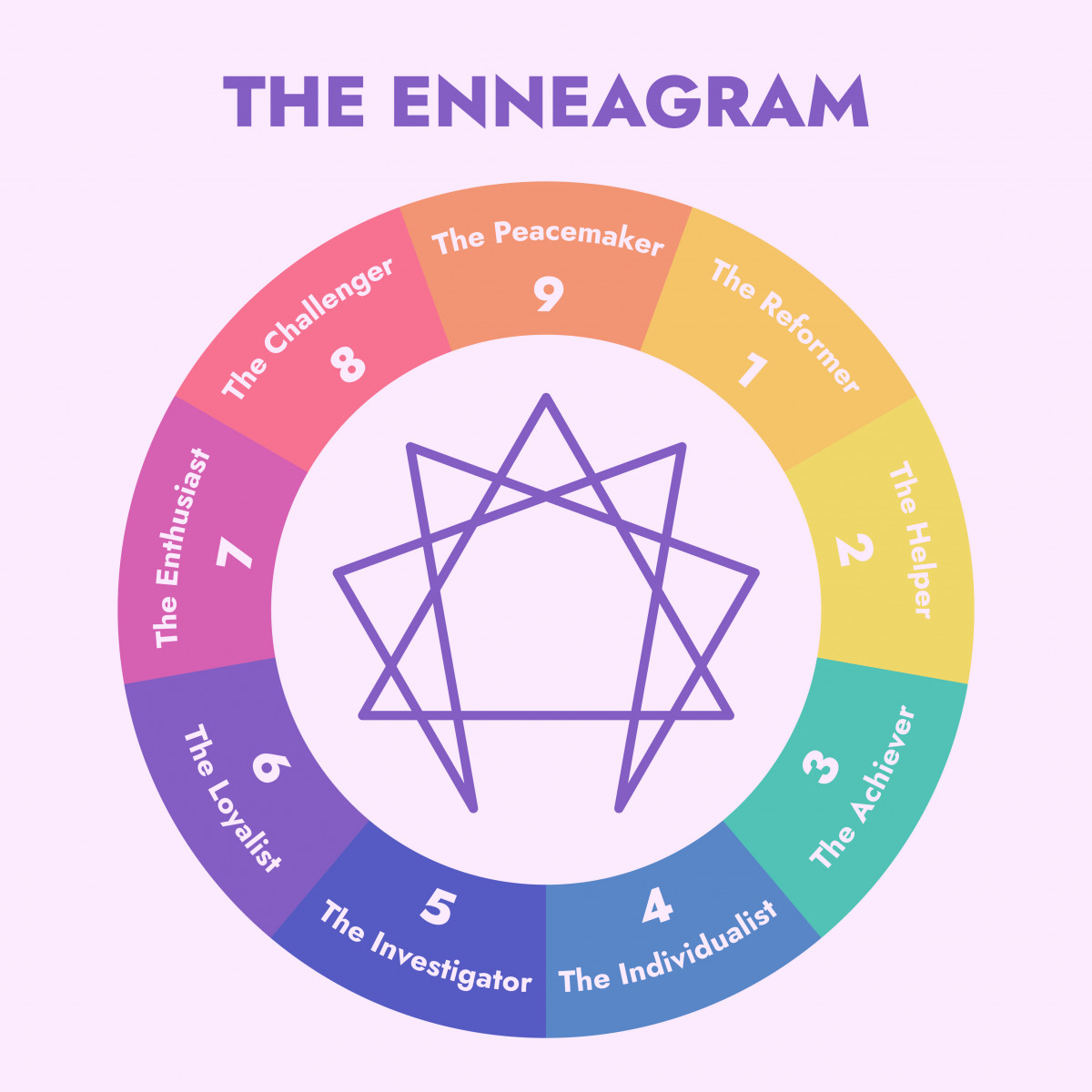Have you ever wondered what makes you different from other people? The Enneagram is a powerful tool to help answer this question. It’s an ancient system of personality typing that can be used for personal growth and development. This beginner’s guide will give you the basics of the Enneagram, so you can start exploring your unique type.
What is the Enneagram?
The Enneagram is a system of personality typing represented by a nine-pointed geometric symbol. It can be used to gain insight into your personality and motivations and those of others. The Enneagram identifies nine distinct types of personalities based on how we think, feel, and act in our daily lives.
Each type has unique characteristics determined by how we perceive ourselves and the world around us. These characteristics include our core values, beliefs, fears, desires, strengths, and weaknesses. By better understanding these aspects of ourselves through the Enneagram system, we can become more aware of our patterns and behaviors to make positive life changes.
The nine types are divided into three categories: Gut Triad (Reformer/Perfectionist; Helper/Giver; Achiever/Performer), Heart Triad (Romantic/Individualist; Loyalist/Loyal Skeptic; Epicure/Enthusiast), and Head Triad (Investigator/Observer; Challenger/Protector; Peacemaker/Mediator). Each type has unique traits, such as being creative or analytical thinkers or having an optimistic outlook on life.
By exploring each type’s qualities further with the help of books or online resources like blogs or videos about the Enneagram system, you can identify which one best describes you most accurately. This knowledge will allow you to recognize how your thoughts, feelings, and actions affect yourself and those around you. You may also discover new ways to approach challenges in life more effectively.

How Does the Enneagram Work?
The Enneagram is a powerful tool for understanding ourselves and others. It is based on nine distinct personality types, each with its strengths and weaknesses. By understanding the different types, we can gain insight into our behavior patterns and those of others. At the core of the Enneagram are three basic motivations: security, connection, and growth. Each type has a unique way of seeking these goals that influence their thoughts, feelings, and behaviors.
Type One (The Reformer) seeks to live up to an internalized ideal by striving for perfectionism; they focus on being ethical and responsible in all aspects of life.
Type Two (The Helper) strives to be needed by others; they prioritize relationships over tasks or projects to feel connected to others.
Type Three (The Achiever) focuses on success as measured by external standards; they strive for recognition from peers or authority figures through accomplishments or performance-based achievements.
Type Four (The Individualist) values uniqueness above all else; they seek experiences that will help them stand out from the crowd while providing emotional depth or intensity.
Type Five (The Investigator) seeks knowledge as a form of security; they prefer solitary activities such as reading or researching topics that interest them rather than engaging with other people directly.
Type Six (The Loyalist) looks for safety through structure; they may become anxious when uncertain, so they look towards trusted sources like family members or colleagues for guidance when making decisions about their plans or actions.
Type Seven (The Enthusiast) looks towards pleasure as a source of comfort; this type tends to take risks without considering potential consequences due to their desire for immediate gratification from activities like travel, partying, shopping, etc.
Type Eight (The Challenger) seeks power over vulnerability by dominating situations rather than submitting themselves emotionally. This type often comes across as intimidating but, deep down, desires strong connections with those around them despite appearing distant at times. Lastly, there is
Type Nine (The Peacemaker) values harmony above all else. This type typically avoids conflict at any cost. S
Overall, the Enneagram offers valuable insights into how we think, feel, act, relate and respond, which can help us better understand ourselves and those around us so that we can make more informed decisions and build healthier personal and professional relationships.
How Can I Use the Enneagram?
It can be used to gain insight into yourself and others, allowing you to understand better how you interact and work together more effectively. It also helps identify areas of personal growth and development.
Understanding the Nine Types
The Enneagram consists of nine distinct personality types based on core motivations, fears, strengths, weaknesses, values, and beliefs. By understanding these nine types in detail—including their unique needs, desires, and goals—you can begin to recognize patterns in your behavior and those around you. This allows for greater self-awareness as well as improved communication between individuals or groups of people.
Identifying Your Type
To use the Enneagram most effectively, it’s important first to identify which type best describes you. There are various tests available online that will help determine your type; however, it’s important to remember that no test is 100% accurate, so it’s always best to seek out additional resources if needed before making any decisions about your type or those of others around you.
Gaining Insight Into Others
Once you have identified your type, it becomes easier to recognize the traits of other types within yourself or among those around you – family members, friends or colleagues at work, etc. This knowledge gives us valuable insight into why we act in certain ways when interacting with different people, ultimately leading us toward better personal and professional relationships.
Making Use Of Strengths and Weaknesses
Understanding our strengths and weaknesses is essential for success in all aspects of life – from career choices through relationships to day-to-day decision-making processes such as problem-solving. With this knowledge comes an increased ability to recognize our limitations and learn how to use them to achieve our desired outcomes by playing off one another’s strengths instead of relying solely on ourselves alone every time something needs doing.
Knowing what motivates us internally allows us to set realistic goals while avoiding potential pitfalls along the way, enabling faster progress toward reaching our desired destination, whatever that may be. Additionally, having a deeper understanding of who we mean means being able to open up opportunities previously thought impossible due to a lack of confidence or fear of failure, amongst many other things.
FAQs About Enneagram
What is the Enneagram in simple terms?
It is an ancient personality typing system that describes nine distinct patterns of thinking, feeling, and behaving. Each type has unique strengths, weaknesses, motivations, fears, and potentials. By understanding the different types within ourselves and others, we can better understand our behavior patterns and learn how to work with them to create more fulfilling personal and professional relationships. The Enneagram helps us recognize our blind spots to make conscious choices about living our lives in alignment with who we truly are.
Where do I start with Enneagram?
It provides insight into nine distinct personality types, each with its strengths, weaknesses, motivations, fears, and desires. By exploring the nuances of each type through self-reflection and observation of others, you can gain greater awareness of yourself and those around you. With this knowledge comes the power to make better decisions in all areas—from relationships to career choices—and ultimately achieve greater success.
Conclusion
Hopefully, with the help of this blog article, you can begin exploring the nine personality types and how they affect your relationships. By taking time to understand the Enneagram, you can gain insight into why people act and think the way they do, which can help improve communication and create more meaningful connections with those around you.
